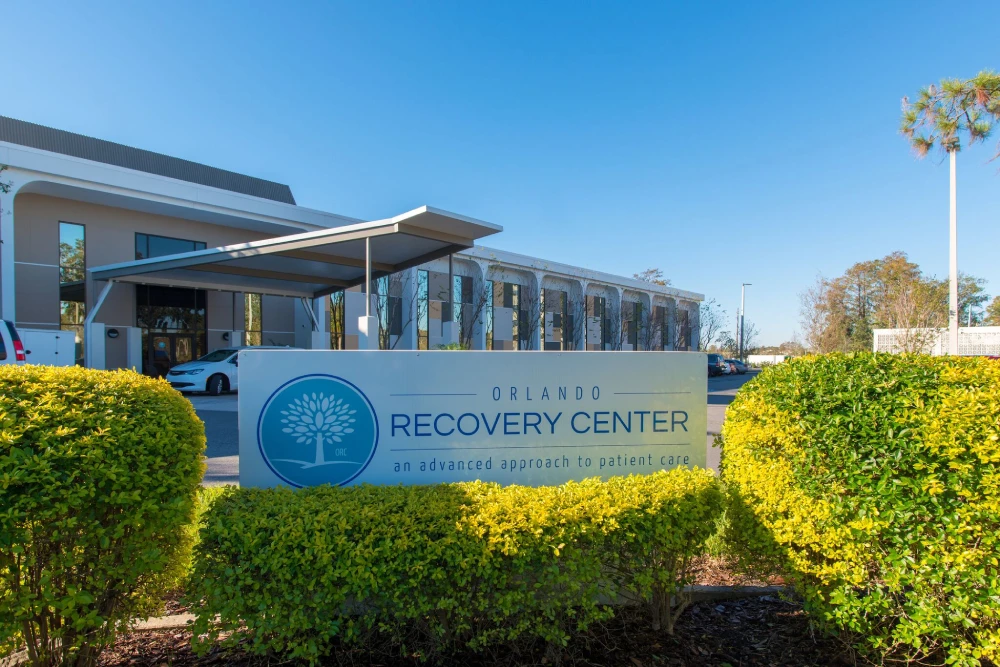If you’re worried that a loved one is using meth, these behavioral, physical and psychological signs & symptoms can help you confirm.
Methamphetamine is a dangerous illicit drug that can affect the body in a number of ways. Being the spouse, parent, friend orloved one of someone using methcan be difficult when you become aware of these effects. Perhaps you’re only familiar with the side effects based on what you see in movies or on television. Knowing the signs of meth use can help you talk to your loved one about getting treatment. It can even save their life.
Article at a Glance:
- Methamphetamine, or meth, is a Schedule II stimulant that is often trafficked illicitly.
- Signs a person is on meth can include behavioral changes like psychosis as well as physical signs like premature aging.
- Meth use is often accompanied by paraphernalia, including needles, spoons and homemade pipes from drinking straws.
What Is Meth?
Methamphetamine, also called meth, is a stimulant drug that is also called street names like crystal meth, chalk, ice or speed. It is aSchedule II controlled substancethat is often trafficked illegally in the United States. However, a doctor can also legally prescribe it to treatattention-deficit hyperactivity disorder (ADHD).
As of 2019,about 2 million peopleannually were using meth.This includesabout 1.7 million people aged 26 or older, 275,000 people aged 18 to 25 years, and 41,000 adolescents aged 12 to 17 years.
What Does Meth Look Like?
In most cases,methamphetamine looks likea white crystalline powder. It is also sometimes pressed into a pill form. The drug isodorless with a bitter tasteand can dissolve in water or alcohol.
The form of the drug known as crystal meth is shiny, clear or bluish crystals that look like glass fragments or rocks.
Crystal Meth
Crystal methis a more potent form of meth that tends to be purer and more concentrated than other forms. It is typically smoked, or heated into a liquid then injected. Like other forms of meth, crystal meth is entirely synthetic rather than derived from a plant like many other illicit substances. Making crystal meth is dangerous, as it creates toxic, explosive chemical byproducts.
What Does Crystal Meth Look Like?
Crystal meth earns its name because of its crystal-like physical properties, earning the street name “ice” due to its glass-shard and ice-like appearance. The crystals can be white, clear, blue or a combination of these colors.
Meth Powder
Thepowdered form of methmay be more common, as it is less potent and potentially less expensive. Powdered meth is most commonly used by snorting it, but can be taken in pill form or dissolved in fluids and ingested.
Producing powdered meth is similar to creating crystal meth — it’s just as dangerous, with the possibility of toxic or explosive chemicals occurring as a byproduct. Powdered meth is often cut, or combined, with other substances. This can either dilute the amount of meth to increase the profit to the dealer or combine the intended effects of meth with other substances.
What Does Meth Powder Look Like?
Powered methcan vary in appearance, but is normally a white or yellowish powder. It is usually impossible to tell powdered meth apart from other drugs that are in powdered form. It is also difficult or impossible to tell if other substances have been added to powdered meth.
Liquid Meth
Meth is normally used in its solid crystal or powder forms, but can beturned into a liquid for transportation. In this process, powdered meth is dissolved in water, then transported. To prepare the meth for use, the water is boiled off, leaving just the powdered form.
Liquid meth can also be injected as-is. It is normally prepared in a spoon or a similar utensil then drawn into a syringe.
What Does Liquid Meth Look Like?
Liquid meth is usually a clear liquid, but it may have a tinge of color depending on its purity, and whether or not it was cut with other substances. It is typically difficult to tell if a liquid contains meth just by looking at it.
How Is Meth Used?
Meth comes in different forms and can be takenseveral different ways, including snorting, injecting, consuming orally or smoking it. Crystal meth ismost commonly smoked. In arecent studyof current and former meth use,63% of people smoked meth, 44% snorted meth, 27% injected meth and 30% swallowed it.Nearly half of all people who use meth consume it with multiple methods, and 7% use all four methods over their lifetime.
When meth is first used, it creates an immediate rush. Thatrush lasts up to 30 minutesand is described as extremely pleasurable. Following the initial rush, ameth high can last for up to 14 hours. The onset and length of the high vary based on how it is taken.
According toour 2021 survey of former and current meth use, meth use tends to be frequent. In fact, 44.4% of respondents use or used meth daily and 22.9% use or used it several times per week.
Common Signs Someone Is On or Using Meth
People on meth typically exhibit certain physical signs. If you’re wondering how to tell if someone is using meth, symptoms can include being energized or physically active, and a reduced appetite.
Look For Meth Paraphernalia
Paraphernalia includes accessories that people use when taking drugs. Some types of paraphernalia are used for multiple types of drugs. Commonparaphernalia linked to methinclude:
- Needles
- Syringes
- Spoons, often with burn marks on the bottom from being heated
- Cotton balls
- Butane lighters
- Tinfoil
- Small glass or metal pipes
- Plastic pen casings
- Drinking straws
- Small mirrors
- Razor blades
- Plastic cards, such as credit cards, for breaking up the substance
- Rolled paper, such as dollar bills, to snort the powdered substance
If you suspect someone may be cooking meth, there are telltalesigns to identify a meth lab. Outside, you may see blacked-out windows or smell unusual odors, and signs inside can include the appearance of funnels and lab equipment. Be aware of the physical effects that can come with cooking meth, including asthma, insomnia or tremors.
If you come across a meth lab, do not approach it. Protect yourself and others by leaving immediately and alerting law enforcement.
Behavioral Signs of Meth Use

If a loved one is struggling with meth, you may notice some of the drug’s side effects. Somebehavioral signs that a personis using meth include:
- Dilated pupils
- High blood pressure
- Elevated body temperature and heart rate
- Shortness of breath
- Grinding of teeth
- Being very alert or physically active
- Reduced appetite and weight loss
- Outbursts or mood swings
- Paranoia or hallucinations
In asurvey by The Recovery Village, people who currently and formerly used meth reported symptoms that lasted long-term, even after they stopped using meth. 23% reported high blood pressure, 27% reported sudden or severe weight loss and 16% reported hallucinations. People who utilized multiple methods doubled their chances of experiencing weight loss and hallucinations.
Physical Signs of Meth Use
Methamphetamine is a dangerous and highly addictive drug, and its signs of use are among the most recognizable of all substances. Some of the most commonsigns of meth use are apparent in the person’s appearance. Crystal meth can dramatically impact the user’s looks and give them certain distinctive characteristics. Roughly37% of peoplewho use or used meth report a significant impact on their appearance.

Some visible meth symptoms can include:
- Premature aging
- Picking at skin or hair,causing meth sores
- Loss of appetite and weight loss
- Outbursts or mood swings
- Paranoia or hallucinations
- “Meth mouth,” the characteristic tooth decaycaused by meth use
Visible signs are less common than you’d think, so just because someone isn’t exhibiting these signs doesn’t mean they aren’t using meth.One in three people who use or have used methreported meth mouthor broken teeth, and 31% reported sores, abscesses or infections on their skin from scratching.
However, these signs are more common among people who report heavy meth use.People who use meth heavily are four times more likely to experience meth mouth and two times more likely to have sores or infections.
The method of use also plays a part in physical signs of use.In our survey,people who smoked meth were three times more likely to get meth mouth, while those who snorted it were 2.5 times more likely to have nasal damage. Those who injected meth were three times more likely to have sores or infections on their skin.
A combination of particular visible signs and matching paraphernalia — sores and a needle or syringe, for example — is a telling indicator.
Related Topic:Starting Treatment with Online Rehab
What Is Tweaking?
“Tweaking” is another element that can help determine whether or not someone is using crystal meth. Tweaking occurs at the end of a drug binge when the person using can’t achieve a rush or high anymore, struggles to achieve feelings of euphoria from meth and is often left with intense cravings and a sense of desperation.

Some additionalsigns of tweaking can include:
- Feeling like bugs are crawling under the skin
- Being unable to sleep for days
- Being in a psychotic state or completely disconnected from reality
- Growing increasingly frustrated, paranoid and unstable
- Experiencing hallucinations
- Self-harm
- Strong cravings for meth
What Is a Tweaker?
A “tweaker” is a slang name for someone who uses meth and comes from the term “tweaking”. While calling someone a tweaker may be used to refer to tweaking specifically, it can also refer to someone in the context of their meth use in general.
The Crash
Another sign someone is using crystal meth is the crash phase. During this period, the person’s body collapses after the constant stimulation from meth, usually ending in long periods of sleep. A crash can last anywhere fromone to three days, and it can be an outward sign of meth use that’s apparent to people around the user.

Meth Withdrawal Signs
If someone with a meth use disorder suddenly stops using it, signs of withdrawal may be apparent.Withdrawal from methcan cause mental symptoms, particularly in those who have used the drug long-term. Along with intense cravings, signs of withdrawal can include anxiety, fatigue, headaches and depression.
Headaches are themost common meth withdrawal symptom, occurring in 63% of people who use meth, followed by fatigue in 57%, sleep problems in 52%, and depression and anxiety in 41%.
Remember that these withdrawal symptoms are also associated with many other medical conditions and should not be considered a sign of meth use on their own. They should instead reinforce other visible signs and behaviors associated with meth use.
Recognize the Signs of Meth Use So You Can Prevent the Damaging Effects
Meth can havedamaging effects on the user, both physically and psychologically, including:
- Changes in brain structure and function
- Deficits in thinking and motor skills
- Severe dental problems
- Psychosis
- Aggressive or violent behavior
- Heart or brain damage from the stress meth causes on the body
Some neurobiological effects could be partially reversible, but it’s important to address meth use as early as possible to prevent any long-term effects and increase the chances of successful treatment.
Taking the Next Step
If you recognize the signs of meth use, you should seek help from a medical professional orprofessional rehab treatment program. Someone who is using meth can not only harm themselves but can be a danger to people around them.
If you or a loved one are struggling with a meth addiction,The Recovery Village can help. Calls are free and confidential, so pick up the phone and start the road to recovery today.


















